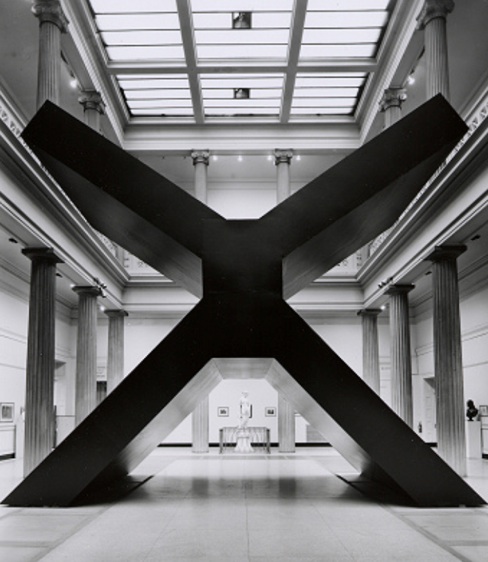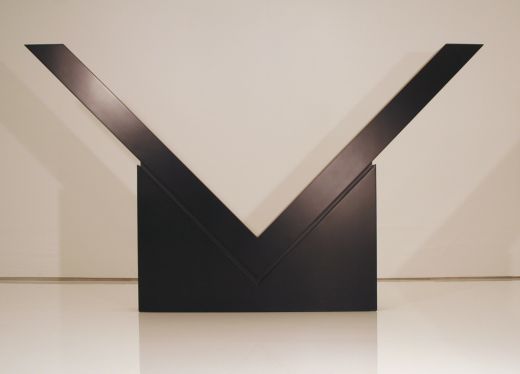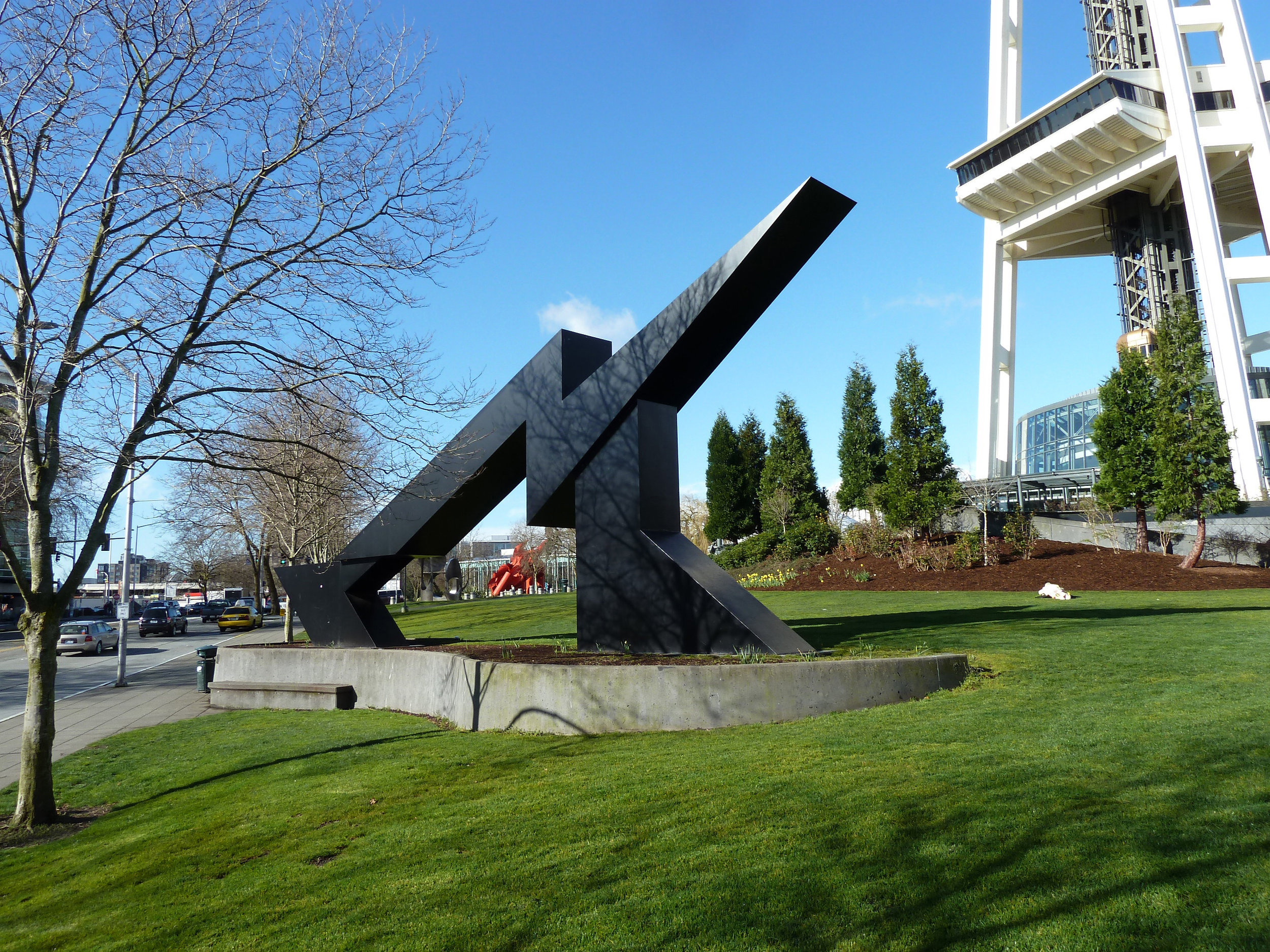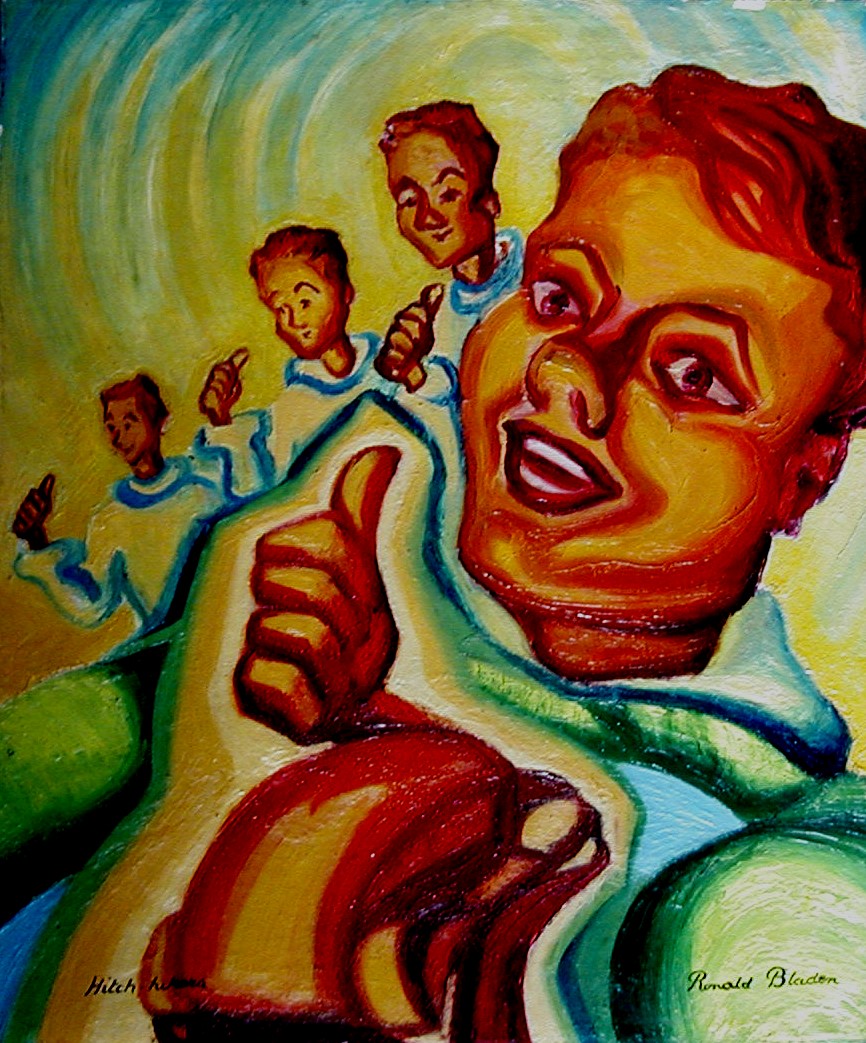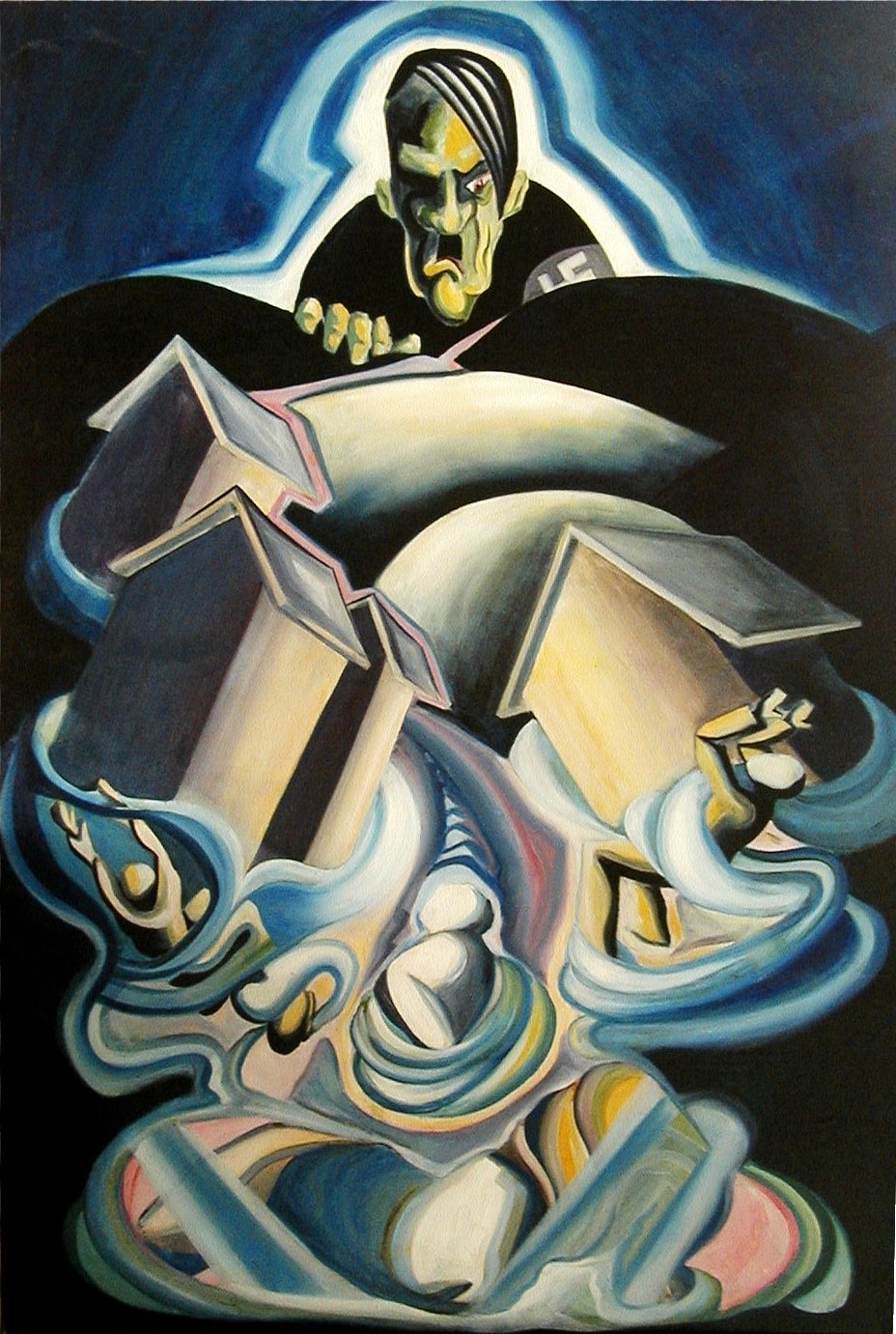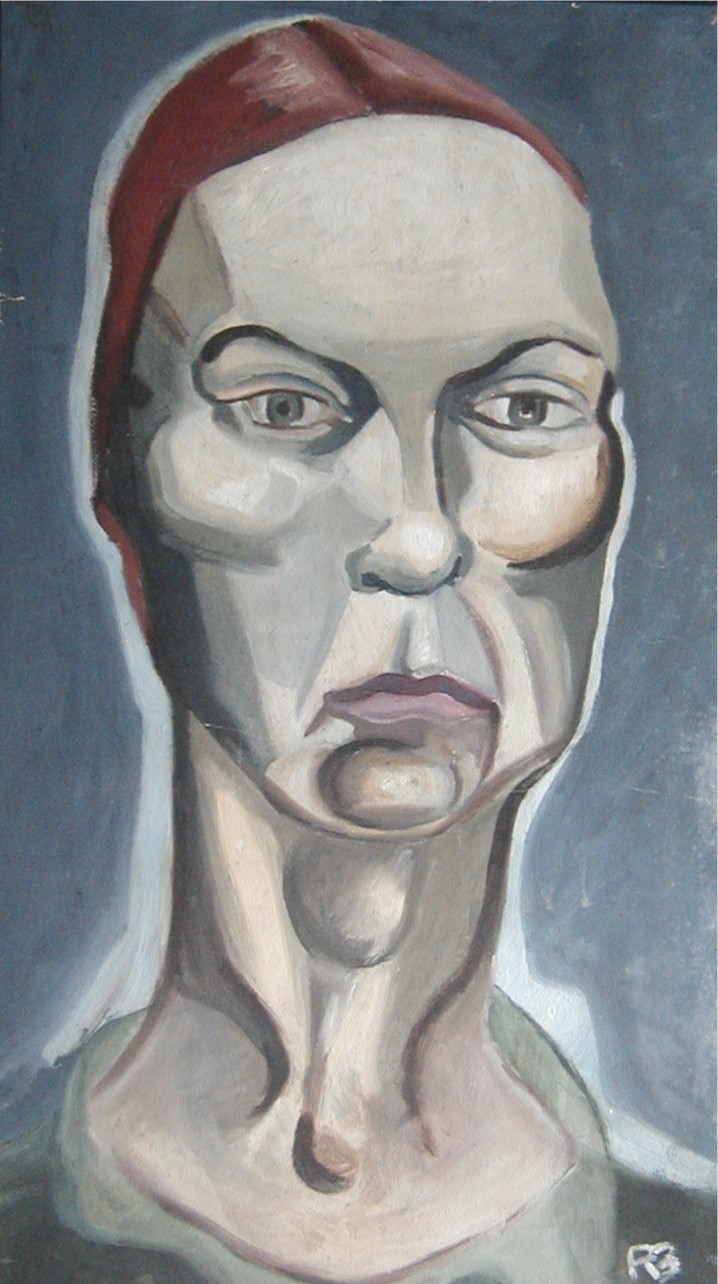Photo by Eric Koch / Anefo
Ronald Bladen, 1918- 1988
Charles Ronald Wells Bladen was born on July 13, 1918 in Vancouver, BC, Canada. In 1922 the Bladen family moved to Washington state. However, the family returned to Canada to live in Victoria, BC. when Bladen was 14 years old. Even at this age, Bladen was already showing a keen interest and considerable talent for art. His parents fully supported his interest and arranged private art lessons with the painter, Max Maynard.
In 1937, Bladen moved to Vancouver to attend the Vancouver School of Art, but less than two years later, in 1939, he moved again to San Francisco to attend the California School of Fine Arts.
Bladen was drafted in 1941, but was declared unfit for service. He took a job in the navy dockyards as a ship’s welder. The skills he learned at this job would eventually allow him to support himself as a toolmaker, and later, a sculptor.
In 1946, Bladen held his first solo exhibition at the Vancouver Art Gallery. The same year Bladen traveled to Tijuana, Mexico, New Orleans and New York on a grant he received from the San Francisco Art Association. In New York, he saw Jackson Pollack's work at the Guggenheim.
In 1948, he married the Actress Barbara Gross. The couple moved to San Carlos, California and bought a house on Winding Bay where Bladen set up a studio. In 1951, Bladen became a US citizen and a father. Sadly, his son Bran died shortly after birth of kidney failure. The marriage lasted 7 years.
After his separation from Barbara, Bladen moved into a communal household in San Francisco. There he met and befriended many influential people including, poet Michael McClure, painter Al Held and writers Jack Kerouac, Henry Miller and Allen Ginsberg.
In 1956, Bladen moved to New York. Through his now close friend, Al Held, he was introduced to fellow painters George Sugarman, and Nicholas and John Krushenick. Together they founded the Brata Gallery co-operative. Bladen embarked on a new style of painting at this time; intensely bright and colourful plains of colour dominated his work. In 1960, he took over Al Held’s studio at 5 west 21st Street, and began to create large scale plywood relief paintings and folded paper collages. At this time, he supported himself working as a toolmaker.
Two years later, Bladen unveiled his plywood paintings first at the Brata Gallery and then the Green Gallery in New York. Shortly after these exhibitions, he created his first free-standing sculptures from plywood boards and metal struts. Slowly, Bladen was moving towards sculpture.
In 1964, he showed his first sculpture, White Z, at an exhibition in the Park Place Gallery in New York. At this exhibition he met a fellow sculptor, Connie Reyes, who would become his companion.
In 1966, he showed the tripartite work, Three Elements, at the exhibition, Primary Structures Younger American and British Artists, in the Jewish Museum in New York. This exhibition brought minimalist sculpture to the public for the first time. Bladen’s work was exhibited alongside the biggest names sculpture, such as Carl Andre, Dan Flavin, Donald Judd, Sol LeWitt, Walter De Maria and Robert Morris. In 1967 he showed his monumental sculpture The X, at the Corcoran Gallery of Art’s exhibition Scale as Content. The exhibition brought together important sculptures by Ronald Bladen, Barnett Newman and Tony Smith
In 1968, Bladen was awarded the John Simon Guggenheim Memorial Foundation Fellowship, was represented at documenta 4 in Kassel, Germany. He was among the artists presented under the title, Minimal Art, West Berlin.
Over the next 15 years, Bladen completed a number of important public commissions, including:
- 1969 The Cathedral Evening for Albany New York
- 1974 Vroom Sh-Sh-Sh For Buffalo, New York
- 1975 Raiko I for Galerie Schmela in Düsseldorf, Germany
- 1977 Cosmic Seed for Des Moines, Iowa
- 1978 Kama Sutra for Central Park, New York, New York
- Oracle’s Vision for Springfield, Ohio
- Black Lightning for Seattle, Washington
- The King Faisal University in Riyadh, Saudi Arabia
- 1981 Host of the Ellipse for Baltimore, Maryland
- 1983 Sonar Tide for Peoria, Illinois
Bladen also had an active teaching career from 1974 to 1983. Among his teaching posts; guest lecturer at Columbia University in New York, (he was awarded the Mark Rothko Fellowship in 1975), teacher at the Parsons The New School for Design, instructor at the School of Visual Arts, Manhattan New York, Artist in Residence in 1981/1982 at the Skowhegan School of Painting and Sculpture (Maine), and in 1982-1983, a guest lecturer at Yale University in New Haven (Connecticut). In 1977, he was once again awarded the National Endowment of the Arts.
At the beginning of 1988, in recognition for his services to the summer academy in Skowhegan, Bladen was awarded the Skowhegan Trustees & Governor Award for Service to the Arts.
On February 3rd, 1988, Ronald Bladen died in New York of cancer. He left a lasting impression on the next generation of sculptors, who repeatedly referred to him as one of the ‘father figures’ of Minimal Art.


